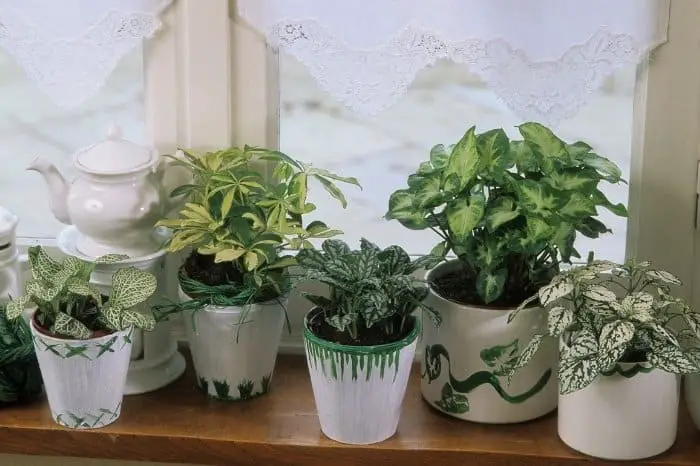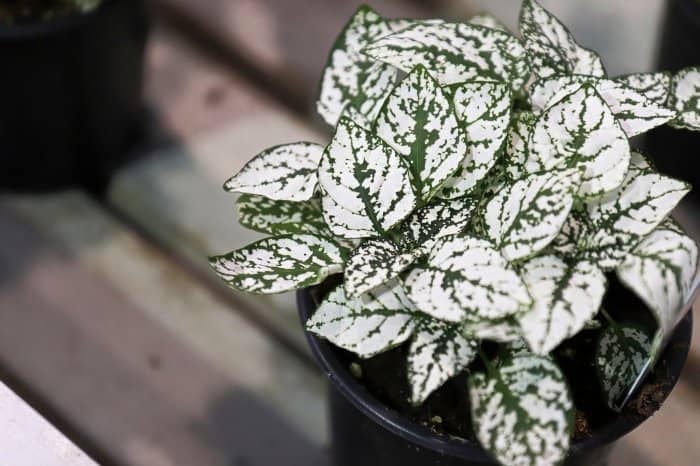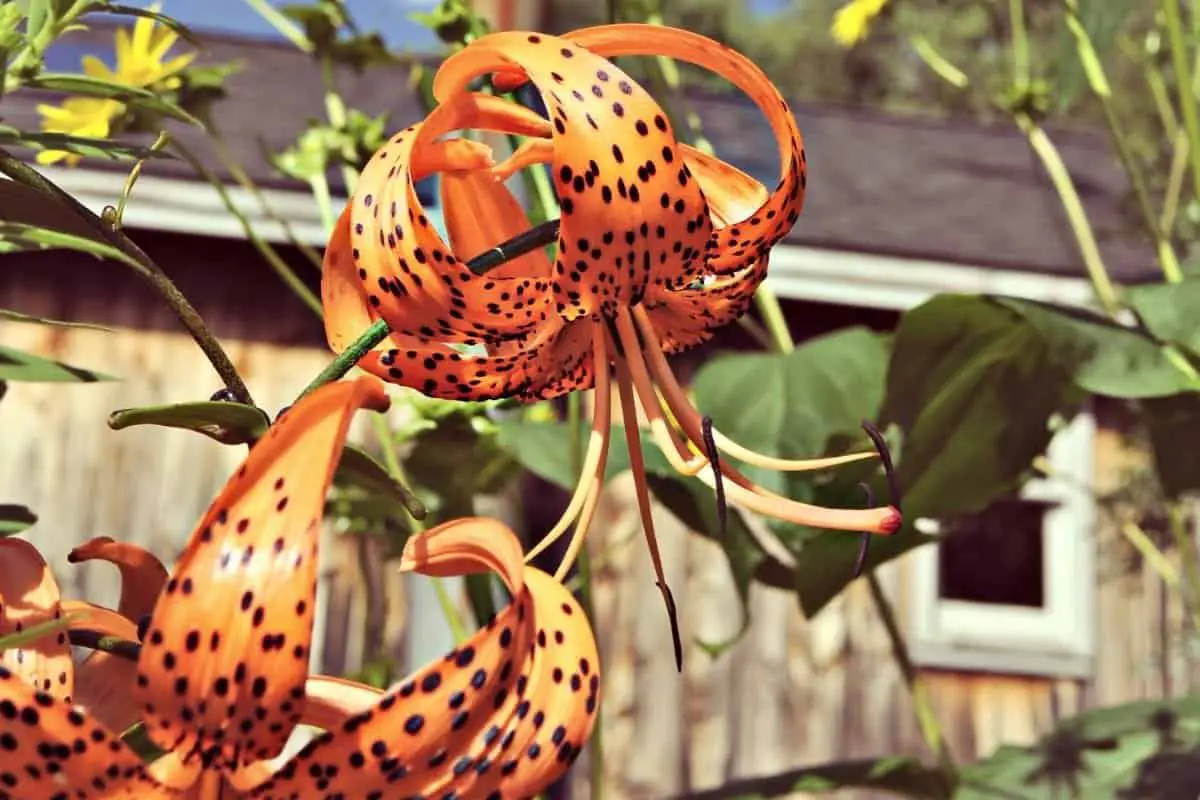Last Updated on December 16, 2021 by Cristina
Plant diseases are the most frustrating part of gardening – especially when your polka dot plant leaves are curling, and you’re struggling to find out why? The polka dot plant can’t go unnoticed; it’s a captivating choice as a house plant or an addition to your garden landscape. The eye-catching foliage comes in four distinctive color combinations.
Unfortunately, having the mature plant get sick is common. Let’s find out how you can stop the leaves from curling.
Polka Dot Plants – The Freckled Jewel
Polka dot (Hypoestes phyllostachya) or pink spot plant is among the most famous house plants. They stand out from other green leafy plants and add great texture to flower beds.
Polka dot plant originates from Madagascar and can grow up to 3 feet in their natural habitat. It’s a perennial shrub when grown in a warm climate. They’re not considered invasive in the US, and their stems become woody when several years old.

Household poted polka dot plants are smaller and can be grown as annuals. Reproducing the polka dot plant is relatively easy. You can propagate cuttings or gather the seeds and grow them in soil.
Types Of Polka Dot Plants
There are 7 different types of polka dot plants. Here are the ones worth mentioning:
-
-
Pink Brocade is one of the most common, with dark green leaves and an abundance of tiny pale pink spots. It thrives in full sun or partial shade and grows up to 2 feet in ideal conditions.
-
Pink Dot has dark green leaves with more prominent pale pink spots.
-
Red Splash and White Splash are not as common and grow up to 12 inches in height and width. They’re low maintenance and add a unique accent to every garden.
-
Why Are The Polka Dot Plant Leaves Are Curling?
In order to prevent diseases and discoloration in your plants, it’s essential to ensure the proper growing conditions. You should plant your polka dot plant in spring when the temperature is at least 60°F. They grow best from cuttings; however, if you have seeds on hand, plant them in warm and moist soil when temperatures rise over 70°F.
Polka dot plants usually come with a pink base with green spots. But there are also varieties with a purple, red and white base. They develop the best, most vibrant color when exposed to moderate light.
Low light will cause the stems to stretch out in search of more light, resulting in a leggy plant. On the other hand, direct sunlight causes damages, such as curled leaves. Moderate, indirect bright sunlight is the optimal choice.
LOOPSEED Plant Saucer 6 Pack Drip Trays Planter Pot Base for Indoor Houseplants
How To Prevent Curling
If you’ve already made the mistake of placing the plant in direct sunlight, don’t worry. Your polka dot plant leaves might’ve started curling but they’re not damaged for good. Here’s what you can do to heal them.
Start with relocating the plant. This is easier when the plant is potted but not impossible with garden pieces. Next, look for a spot with dappled shade. The full shade will cause the leaves and colors to underdevelop. Full direct light will cause the leaves to curl, and the vibrant color fades.
Polka Dot Plant Flowering Period
Polka dot plants thrive in warm and humid conditions. They occasionally bloom during the summer, producing tiny pink or lilac flowers. In optimal conditions, the flowers produce seeds that can be used to grow new plants.
During the flowering period of the polka dot plant, the leaves can start curling and dry out. If you’ve already provided filtered, indirect sunlight, check the humidity in your home. You might need to place a humidifier near your plant.
If your polka dot plant is outside, there’s still something you can do considering humidity. You can place the plant away from the draft, group several plants in one garden bed, or place containers with water nearby.
Does Every Polka Dot Plant Have Flowers
The flowers on polka dot plants are so small that it can be hard to spot them until they’ve bloomed. But not all of them bloom. There’s no specific period when your polka dot plant is supposed to flower. Most of them bloom once in a blue moon during summer. Unfortunately, this is the end of the plant’s lifecycle.
Although the flowers produce seeds to reproduce the plant, your goal is to prevent flowering. You can grow new polka dot plants from cutting, so the seeds are not essential. Polka dots flowers can spend years without flowering, all you need to do is follow the bits of advice below.
Prevent A Flowering Polka Dot Plant
The leggier the polka dot plant, the higher are the chances of it blooming. Your first step is to ensure proper location. Lack of sunlight leads to developing a leggy plant. Then, perform regular pruning. Pruning helps control the size and allows the plant to form a bushy look.
The polka dot is prone to becoming tall and leggy fast. So you have to prune it as soon as you notice it’s more raised. Don’t wait until it’s fully grown and out of control.
Start by removing the top leaves of the stem. The stem will then develop more leaves below instead of using energy to grow upwards. When the plant is young, you can even prune it by pinching back the leaves with your hands. However, you shouldn’t leave an empty stem. If you remove all leaves, you banish all the growth hormones from the branch.

What Happens After Flowering?
The flowers on a polka dot plant mark the beginning of the end. As the flowers dry out, the plant dies. Outside, polka dot plants live the entire life cycle in a year, so they’re considered annuals. Inside plants, however, are easier to control and live a longer life.
Final Say: Polka Dot Plant Leaves Curling
Polka dot plant leaves are prone to curling when not in the optimal location. This plant requires filtered light and humidity. Outside, it thrives best in USDA Hardiness zones 3 to 10. Inside, you can grow it anywhere as a perennial. To prevent the leaves from curling, put the plant in a spot with a proper amount of indirect sunlight but not shady as it will become leggy. Prune regularly to form a bushy plant and prevent flowering.
Do you have a polka dot plant? If not, share these tips with other plant lovers!
Mary is a passionate gardener who loves spending her days getting her hands dirty and nurturing her plants. She‘s an avid reader of gardening magazines and is always looking for new ways to make her garden thrive. When not outside tending to her plants, Mary can be found inside reading up on the latest gardening trends, comparing notes with fellow gardeners, and finding the perfect pottery planter for her next planting project.



